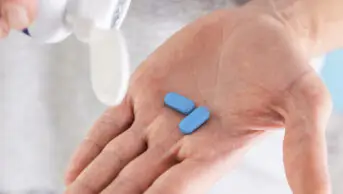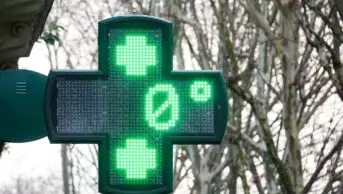Issues in antiretroviral therapy
The HIV protease inhibitors (PIs) and non-nucleoside reverse transcriptase inhibitors (NNRTIs) pose many drug interaction problems because they induct and/or inhibit liver enzymes. This presents a challenge when prescribing antiretroviral therapy (ART) for one HIV risk group – intravenous drug users.
Methadone is hepatically metabolised to an inactive form. Thus, there is a theoretical interaction between methadone and PIs or NNRTIs, which results in altered pharmacokinetics of methadone. Indeed, many intravenous drug users have a fear that commencing ART will affect their methadone maintenance.
Dr FIONA MULCAHY (St James hospital, Dublin, Ireland) gave a presentation on her experience of prescribing ART in a large cohort of intravenous drug users. She investigated the pharmacokinetic interaction that occurred when patients took NNRTIs or PIs in combination with methadone.
Eight patients taking nevirapine and 14 patients on efavirenz participated in the study. Patients who took efavirenz and nevirapine experienced a significant fall in plasma methadone levels, with a mean reduction of 60 per cent and 50 per cent, respectively. In both cases, the reduction in area-under-the-curve (AUC) of methadone was greatest in patients taking high doses of methadone, ie, the higher the initial methadone dose, the greater the effect of ART. The mean onset of methadone withdrawal was eight to 10 days, indicating that it took time for enzyme induction to occur.
Another analysis showed that in patients taking the PIs nelfinavir, ritonavir or lopinavir/r (a product available in the United States that contains a combination of lopinavir and ritonavir), in combination with methadone, plasma methadone levels were reduced. Even though PIs inhibited specific enzymes in the cytochrome P450 liver enzyme system, some PIs could also induce other liver enzymes resulting in reduced levels of co-administered drugs.
According to Dr Mulcahy, the overall advice for physicians caring for patients taking methadone and initiating treatment with any of the above ART is to monitor for signs of methadone withdrawal and, if necessary, to increase the daily methadone dose in 10mg increments from days seven to 10 onwards, once enzyme induction begins. Generally, it is important not to confuse the side effects of ART with withdrawal symptoms of methadone.
One of the side effects of the NNRTI efavirenz is central nervous system disturbance, such as hallucinations, which occur almost immediately when therapy is commenced. Therefore, it should be remembered that withdrawal will not occur until at least day seven, but symptoms of side effects are immediate.
Dr Mulcahy’s view is that if ART is discontinued, it is important to reduce the methadone dose slowly back to the patient’s original maintenance dose. A slow reduction is needed because the enzyme induction can continue for some time.
Treatment of adverse effects
An extensive rash is a common side effect of the NNRTI nevirapine, which often causes its discontinuation. Nevirapine is initially administered at a low dose for two weeks to help reduce the incidence of rash (200mg once daily for 14 days and 200mg twice a day thereafter).
Dr PABLO BARREIRO (Infectious Diseases Unit, Madrid, Spain) presented data from a randomised trial comparing three treatment strategies for initiating nevirapine. Prescribing either an antihistamine or prednisolone for the first two weeks of therapy reduced the incidence of rash compared with standard nevirapine dose escalation.
This conflicted with previous studies which had shown steroids to be ineffective. However, the greatest reduction in rash incidence was achieved by slow nevirapine dose escalation over four weeks (100mg increasing to 400mg, total daily dose) in addition to oral prednisolone.
There were concerns that using slow dose escalation might lead to development of nevirapine resistance, but all patients in this arm of the study had therapeutic levels of nevirapine throughout the dose escalation period. Hence, slow dose escalation might be useful in preventing the development of a rash without compromising the antiviral effect, he said.
Lipodystrophy and metabolic disorders
Lipodystrophy presents as a spectrum of severe abnormalities of lipid and glucose metabolism and fat redistribution. It is associated with ART. Patients can develop a variety of symptoms including loss of fat from the legs, arms and face, development of a “buffalo hump”, increase in visceral abdominal fat, hypercholesterolaemia, hypertriglyceridaemia, hyperglycaemia, insulin resistance and diabetes mellitus. The ultimate consequence of these changes is an increase in the risk of cardiovascular disease, which may offset the reduced mortality rates attained with effective ART. Unfortunately, the aetiology of these conditions is not known and, therefore, effective treatments are not available at present.
Dr FRANK GOEBEL (University of Munich, Germany) presented an overview of available treatments for lipodystrophy that centred on the use of metformin and glitazones to increase insulin sensitivity. A randomised trial of metformin 500mg twice a day in 26 patients with lipodystrophy reduced weight, diastolic blood pressure and visceral abdominal fat.
While troglitazone had been shown to decrease hyperglycaemia in another study, in these patients, low density lipoprotein (LDL) cholesterol was also increased.
Another concern discussed at the conference was the use of metformin in HIV-positive patients because of its potential to cause lactic acidosis. Lactic acidosis is emerging as a toxicity of ART, so combining it with metformin can pose an increased risk. A study in the United Kingdom using rosiglitazone to treat lipodystrophy is scheduled to commence shortly.
It is thought that development of lipodystrophy syndrome is linked to PIs and, more recently, to stavudine. Studies have been presented at recent conferences indicating that switching PIs for NNRTIs and stavudine for abacavir (an alternative reverse transcriptase inhibitor), appear to reverse ART-associated hyperlipidaemia partially.
Pharmacology of resistance
Ongoing HIV replication in the presence of ART results in the development of drug resistance. Most of the available drugs exhibit cross-resistance to other agents, so selecting the best possible ART regimen for patients presents a great challenge to prescribers.
A patient’s initial ART combination represents the best chance of suppressing HIV replication. Each successive ART combination has a poorer chance of reducing the HIV load to below detectable levels because of the accumulation of drug resistance.
Virological failure occurs in patients not only as a result of poor adherence but also because of pharmacological factors.
Low plasma concentrations of PIs can occur in some individuals because of first-pass metabolism in the gut and liver, for which there is great inter-patient variability. This results in incomplete suppression of HIV replication and increased resistance.
The bioavailability of PIs can be increased by concomitant use of low-dose ritonavir. Ritonavir is a potent inhibitor of cytochrome P450 3A in the gut and liver. Therefore, it reduces the metabolism of PIs, which increase the plasma concentration. This strategy can often simplify regimens for patients, as lower doses and reduced dose frequency can be used because of the improved pharmacokinetic profile.
Professor DAVID BACK (professor of pharmacology, Liverpool university) presented data on the importance of optimising the use of currently available PIs. He also reported the importance of the “inhibitory quotient” (IQ) for an antiretroviral drug. The IQ was calculated by dividing the lowest plasma concentration of the antiretroviral drug (Cmin) by the concentration of the drug required to kill 50 per cent of the virus (IC50).
Ideally, an antiretroviral drug should maintain its concentration well above the IC50 throughout the entire dosing interval (see Figure 1). Hence, the higher the IQ value, the more potent the drug.
Figure 1 (currently not available): A concentration-time profile showing the pharmacokinetic benefit of drug 2 over drug 1. The pharmacokinetic benefit might be intrinsic or occur because of an interaction with a co-administered drug. An antiretroviral should ideally maintain its concentration above the viral inhibitory concentration (IC50 or IC95) throughout the dosing interval
A drug that exemplifies this property is lopinavir, a new PI recently licensed in the US. Lopinavir is only available as a combination capsule that also contains ritonavir and is referred to as lopinavir/r (Kaletra).
Dr Back said that the IQ of lopinavir/r had been calculated to be greater than 75, which compared favourably with other PIs that had IQ values ranging from one to five. It was envisaged that lopinavir/r might well be able to overcome PI resistance because of its very high IQ value, making it a good choice for patients who had failed on other PIs.
Dr MARGARET JOHNSON (consultant HIV physician, Royal Free hospital, London) presented the results of a head-to-head study of lopinavir/r versus nelfinavir in patients starting their first triple therapy regimen. Lopinavir/r demonstrated superiority in all analyses, indicating that it might also be a good choice of PI to use early in drug-naive patients.


